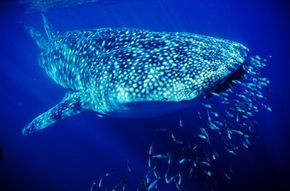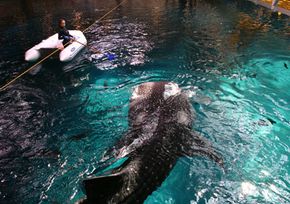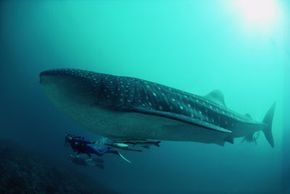Sharks come in all sizes, from the juniors department all the way to the plus-size rack. The dwarf lantern shark averages a mere 5 inches, but sharks only get bigger from there. The pygmy shark is only a few inches bigger than the dwarf lantern shark. The spiny dogfish shark checks in at about 4 feet (1.2 meters) followed by the angel shark at 5 feet (1.5 meters) and the white tip reef shark at 7 feet (2.1 meters). Between 10 to 20 feet (3 to 6 meters) long is where you'll find most sharks -- lemon sharks, hammerheads, nurses and makos, to name a few. Over 20 feet, things get a little scary. Tiger sharks, great hammerheads and great white sharks can all grow to more than 20 plus (6 meters).
Advertisement
But even at its 20 foot (6 meters) maximum size, the great white shark has nothing on the whale shark. It's believed that these behemoths can grow to a jaw-dropping 60-plus feet long (18 meters) -- that's about 20 feet (6 meters) longer than a school bus. Not all whale sharks grow that large. They average 20 to 25 feet (6 to 7.6 meters) but sightings of whale sharks between 40 and 50 feet (12 to 18 meters) are common. Not only is the whale shark the largest shark, it's also the largest fish in the entire ocean.
Andrew Smith was the first ichthyologist, or fish expert, to describe and name the whale shark back in 1828. Its scientific name is Rhincodon typus. Depending on what country you're in, you'll hear it called everything from a tiburon ballena (Spain) to a rekin wielorybi (Poland.) Its size makes the whale shark pretty hard to miss.
While it's frequently seen, there's still a great deal about the whale shark that we don't know. For one thing, because of its size, it's nearly impossible to capture and move to a tank for study. There are only two places in the world with tanks large enough to house a whale shark.
Get ready to learn everything you ever wanted to know about this gentle giant.
Advertisement



